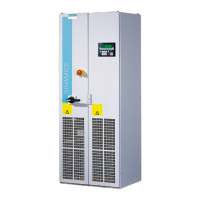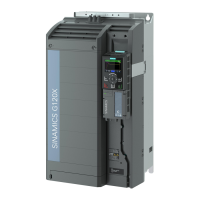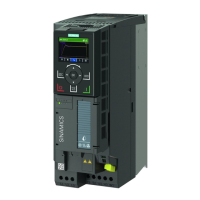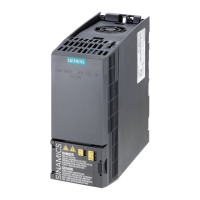Procedure
You must acknowledge safety messages with a failsafe signal. You have the following options for
failsafe acknowledgement:
• Failsafe digital input (F-DI)
Acknowledge the internal event with a positive edge at an F-DI that is interconnected with
c10006 ("SI acknowledgment internal event F-DI"):
F-DI = 0 → 1 → 0 (bullet point)
If PROFIsafe is activated, failsafe acknowledgement via F-DI is not possible.
• PROFIsafe
Acknowledge the fault with bit 7 of safety control word 1 or 2: Bit 7=0 → 1 → 0
• Selection and deselection of STO or SS1
Select the Safety Integrated Function STO or SS1 and then deselect again:
– Via F-DI = 1 → 0 → 1
or
– With bit 0 or 1 of the PROFIsafe safety control word 1 or 2: Bit 0 or 1=1 → 0 → 1
• Switching the supply voltage o and on
Temporarily switch the power supply of the converter o and on again.
• Additional acknowledgement via the "standard" acknowledgement signal
Safety Integrated uses its own message type (C) in the factory setting. When you
reparameterize safety messages via p3117 as an alarm (A) or fault (F), you must additionally
acknowledge the internal event with the "standard" acknowledgment signal.
14.12.12 Functional safety
Overview
A system or machine is considered functionally safe if the safety-relevant parts of the protection
and control equipment function correctly.
Description
Safety, from the perspective of the object to be protected, cannot be split-up. The causes of
danger and therefore also the technical measures to prevent them can vary widely. This is why a
dierentiation is made between dierent types of safety (e.g. by specifying the cause of possible
hazards). "Functional safety" is involved if safety depends on the correct function.
To ensure the functional safety of a system or machine, the safety-related parts of the
protection and control devices must function correctly. In the case of a fault, systems must
respond in such a way that either the plant remains in a safe state or it is brought into
a safe state. In this case, it is necessary to use specially qualied technology that fullls
the requirements described in the associated Standards. The requirements to implement
functional safety are based on the following basic objectives:
• Avoiding systematic faults
• Controlling random faults or failures
Functions
14.12Safety Integrated
SINAMICS G220 converter
Operating Instructions, 04/2024, FW V6.2, A5E51781573B AB 711
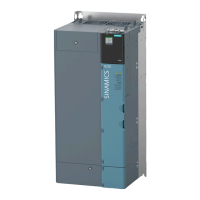
